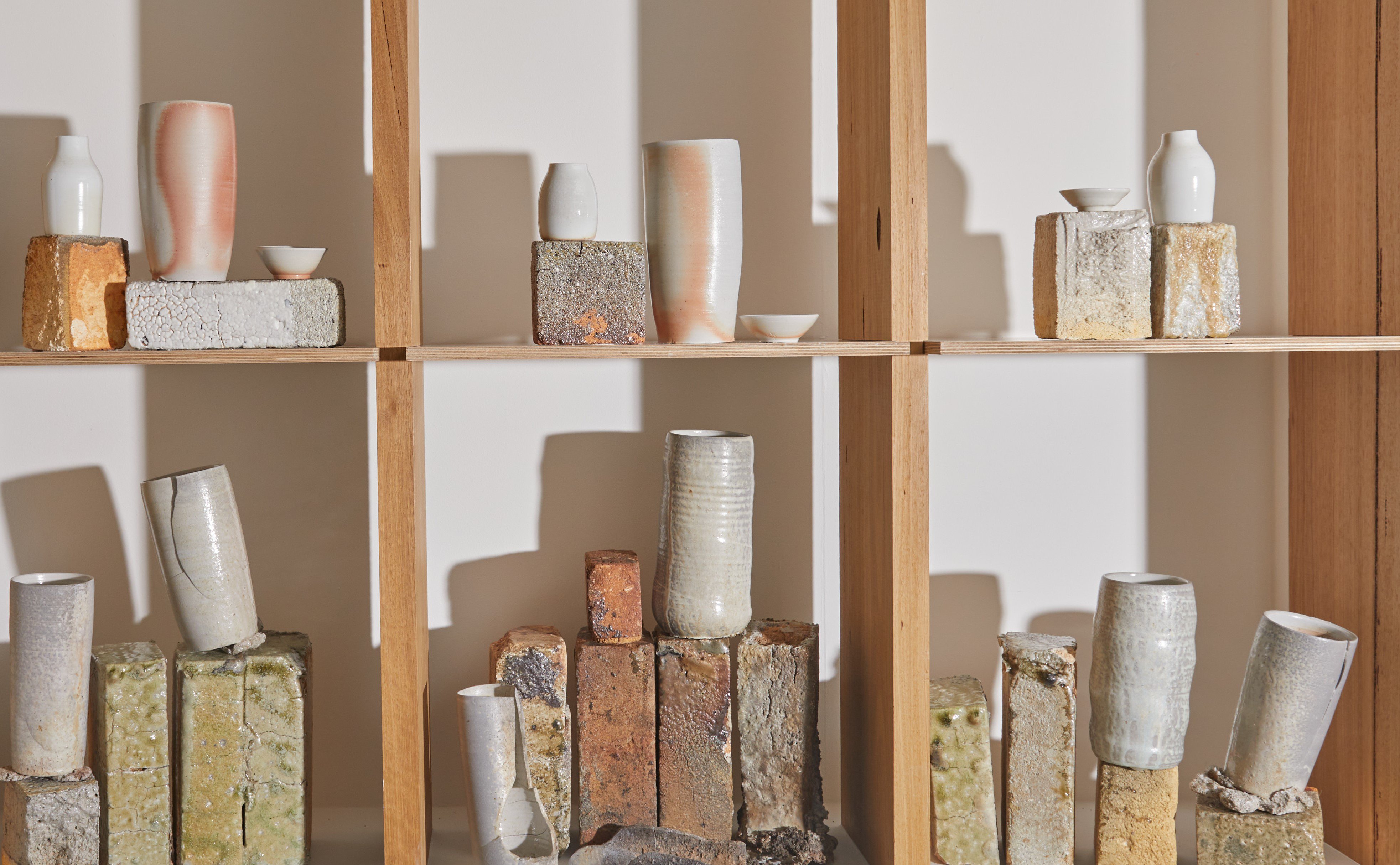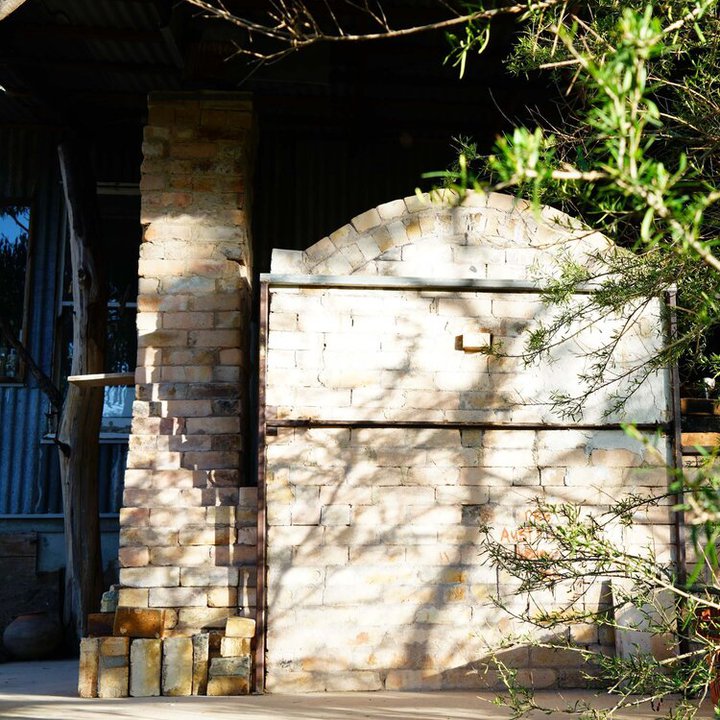
Craft Conversations
Sandra Bowkett has developed her ceramic practice for the past three decades. Bowkett’s Members Vitrine exhibition ‘Woodfired into Lightness’ explores her passion for wood firing through assemblages of vessels and kiln bricks. We asked Sandra to reflect on wood firing, her kiln, and her creative process.
Where did your interest in wood firing begin and what draws you to this firing method in particular?
My first wood firing - while studying at Caulfield Tech (Monash) in the early 70’s - kindled a small dream of one day having a woodfire kiln. After many urban studios, finally settling in the Tallarook ranges on a heavily wooded property enabled that dream to become a possibility.
Inspired by my Rajasthani potter friends, who were always incredulous at the resource lying around unused, it finally clicked for me. Living with a remote power system on a 4WD road, firing with local wood became a logical and practical choice. I like its self-sufficiency; I can collect wood when it suits. Though it is sometimes left to the last moment, at least I know that the fuel is there. Collecting wood from our own property is also a way to minimise fuel load in critical places where bush fires are a constant summer concern.
Aesthetically I am not as drawn to the long woodfired look, but more to the more subtle usable surfaces of Gwyn Hanssen Pigott woodfired work.


Can you tell us about the process of building your wood fire kiln?
The initial dilemma was deciding what type of kiln to build, as there are many options. My prerequisite requirements were for the kiln to be small enough that I could fire it myself and that I needed a precise plan (ie. Brick by brick) for the build.
In 2012, when I decided it was to the time to build another kiln (this would be my 4th), a ceramic triennial was being held in Adelaide. I went with the intention of returning with a decision on what type of kiln to build and focused on talks on wood firing. What I wanted was a design that was guaranteed to work and reach 1300C within 24 hours. By chance, I ran into two women who were very happy with their bourry box kilns and had the plans - that was good enough for me.
The second step was to gather the bricks. I used a combination of bricks from my 1970’s oil burning kiln from South Yarra Firebrick Company, some from a local wood firer, and finally, some purchased new for the firebox. And so, I was ready to start building.
My partner Peter insisted on a concrete slab foundation, it is a steep site so 2 edges cantilever. I still appreciate this every firing as you can sweep off the edges. He also manufactured the exterior steel reinforcing. At this time of building the kiln, I did not think I liked working with bricks, especially cutting them. So, I committed to completing a single course a day, with minimal cutting. The plan had minimal specifications, so for me, it was a puzzle that needed to be solved a brick at a time. I found it easier to work on my own as I was figuring it out as I slowly progressed with the build.
The completion in early 2013 coincided with a visit from Manohar Lal and Banay Singh from Rajasthan, who finished building the chimney.
How did you approach creating your assemblages for this exhibition?
Initially, my attention was drawn to the heavily glazed firebox arch bricks -- the drama of melted ash after 40 plus firings speaks of the power of fire. However, the more subtle gradating colours seen within the body of the broken insulating bricks also speaks of the ceramic process. Some of these bricks I have glazed post their working life in the kiln. I edited my selection down from a large group of bricks. The first parameter for this particular selection, was the vitrine module and the intention to have the visually and actual heaviest in the lower section, with lighter bricks on top. I tend to have a lot in the composition at first and then pare it back until it feels right.
Where does this ‘rightness’ come from? Asymmetry definitely works for me.
The vessels in the lower section were fired in the firebox close to their paired arch bricks, which is reflected in their grittiness and dripping ash glaze. For the wheel thrown vessels, I decided to make them to the brick module of 9 inches. For these works, I also reflected on abandoned roof tiles at a kiln site in India, which were made from cylinders cut length ways -- worker vessels. The more refined smaller ash glazed porcelain vessels of the upper vitrine are intended to create conceptual and aesthetic contrast within the broader assemblage. These were fired within the stacking space in the kiln. The bottle forms are fired to their brick making them one, the tiny bowls remain a flexible element to play with.
Interviewed by Anni Hagberg, Curatorial and Programs Assistant.